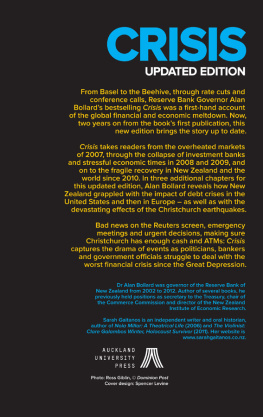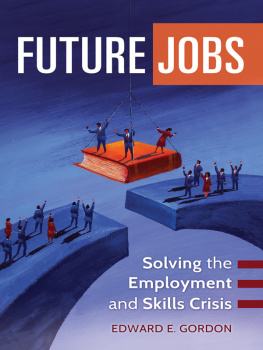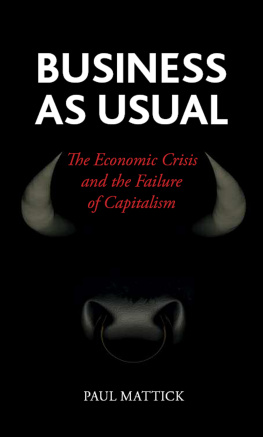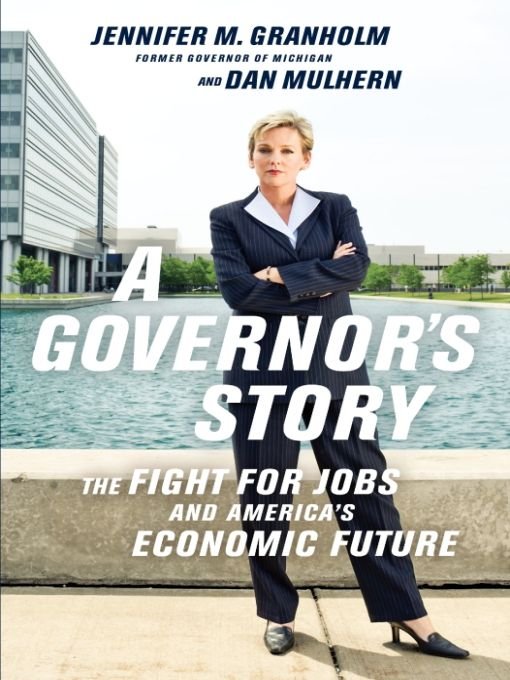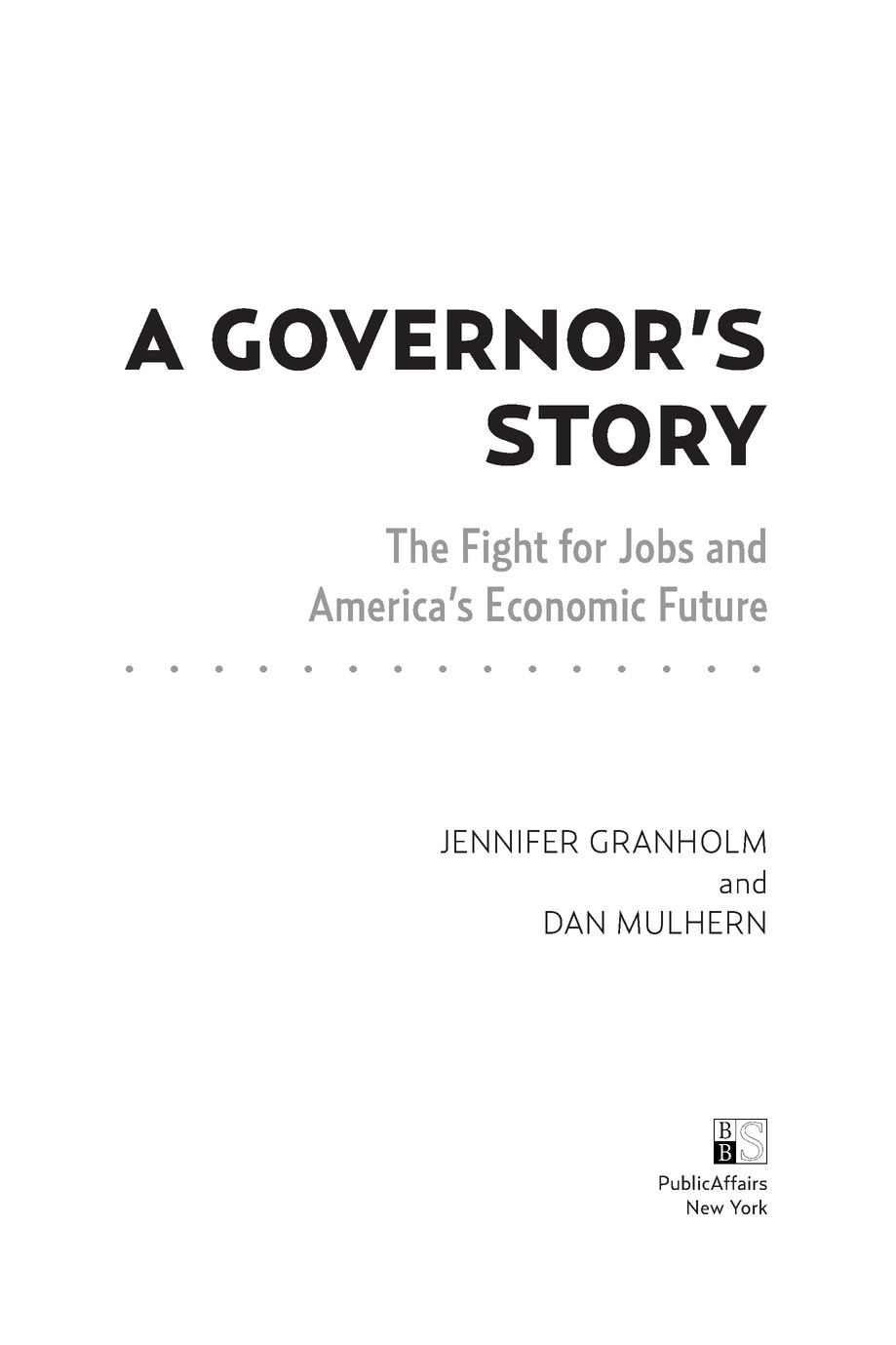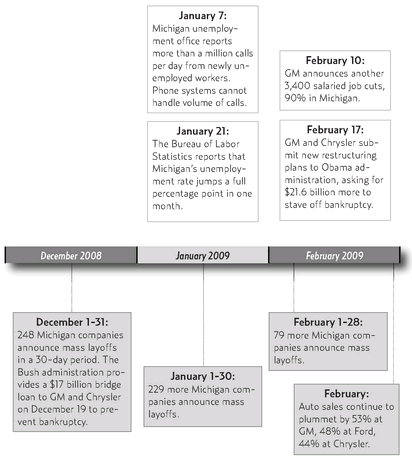Table of Contents
To the workers of Michigan and America who are finding their way in a time of extraordinary challenge and change
SEVEN MONTHS OF FREEFALL
A Michigan Timeline: December 2008June 2009
It wasnt supposed to be like this.
INTRODUCTION
THIS IS THE STORY OF MICHIGAN DURING MY YEARS AS GOVERNOR. Its the story of one of the largest, most economically significant states in the Union as we hit rock bottomthen slowly, painfully, began to climb back toward recovery, resuming growth and, in my last year in office, enjoyed the most improved job creation rate of any state. There are clear reasons for the shocking decline of Michigan, its eventual rebirth, and the hopeful signs of growth the state is now experiencing. In these pages weve sought to explain those reasons and show why they matter deeply to everyone in America.
For Michigan is no aberration. Rather, it is a harbinger of what can happen and indeed is happening across this country. America is struggling to rise beyond what many call a jobless recovery while also being plagued with other economic woesa chronic energy shortfall, crumbling infrastructure, inadequate systems of health care and education, and unrelenting fiscal deficits. Michigan has been ground zero for all these problems.
Cities, states, and the entire nation are grappling with unprecedented budget shortfalls, but before them, Michigan tackled eight straight years of gigantic budget deficits, cut a greater percentage from its budget than any state in the country, and balanced the budget every year.
Governments at every level are struggling to define fair new labor practices that respect the dignity of workers while recognizing new economic realities, but in Michigan we found ways to work with unions both private and public to define tough yet reasonable concessions that have made economic progress possible again.
Businesses around the country are striving to rebound from the worst economic crisis since the Great Depression, but Michigans most important employers have already lived through the largest bankruptcies in American history and emerged with new life and hope for a better future.
For a decade, Michigan has been Americas main laboratory for experimenting with adaptations to the new economic realities. In the process, we have learned a lot. We tested solutions that some governors are now proposing, sometimes discovering that they didnt work because they were built on assumptions that were once largely true but are now dangerously wrong. Chastened by the experience, we shifted to different solutions that are now bearing fruit. In the chapters that follow, well recount our eye-opening experiences for the benefit of citizens, policy experts, business leaders, and elected officials everywhere.
If theres a central message we hope readers will take away from this book, it is that today we face an extraordinary battle for Americas future, especially the future of the middle and working classes. Its a battle that demands a greater level of fresh, creative thinking than any crisis weve faced in decades.
Had I magically been able to read this book eight years ago, I would have been stunned to discover some of the things I was forced to do by the dilemmas I faced as governor. I made cuts in long-cherished social programs that some loyal Democrats considered unconscionable. I disappointed many of our partys traditional allies, from public employee unions to educators to arts organizations, with tough demands for belt-tightening, flexibility, and increased self-reliance. And if I had it to do over again, I would make many of the same choicesexcept that I would make them sooner. I made plenty of mistakes, too, and we learned from them. And the overarching lesson was that many of our old views of the world simply dont match reality anymore.
In Michigan, weve had to change. And the nation has to change, too.
The most important mind-set shift we now require is a break with the conventional wisdom about economic growth. After three decades of conservative ascendancy, global competition is confronting us with the hard fact that pure laissez-faire, free-market theory no longer works. Recent experience shows that tax cuts, deregulation, and a hands-off approach to government dont amount to a magical formula for jobs, profits, and prosperity.
The evidence is plentiful, but one data point stands out above the rest: 42,000 manufacturing plants throughout the United States closed in the last decade, many of them in Michigan. This massive disappearance of manufacturing jobs has taken place despite a steady decrease in business taxes and regulation.
Why? There are many reasonsbut chief among them is the fact that countries like China, India, and Brazil are offering cheap labor, government loans and subsidies, and many other inducements to American companies eager to cut costs and boost their profits by offshoring their production facilities. And manufacturing is only one industry that can and will move. If corporations can essentially ship massive factories on boats to China, creating enormous capital investments there, what makes us think they cant and wont move software development teams, call centers, design studios, research units, legal staffs, printing companies, and many other operations?
Of course they can. Of course they are.
In a world where governments on every continent are quite consciously and publicly fighting to attract capital and jobs, only the U.S. government has been forced by ideological restrictions to compete for those jobs with its hands tied behind its back.
And because, in the real world, the laissez-faire dogma that politicians feel forced to defend is so clearly unworkable, they compound the problem with hypocrisy. Both Republican and Democratic governors commit the supposedly unpardonable sin of intervening in the market every single day. They structure tax incentives, breaks, credits, and regulatory waivers to lure businesses to their states borders. The result is state-versus-state competition rather than a national effort to win the race against global competition. Michigan may be able to beat Indiana, North Carolina, and Texas in head-to-head battles over auto supply factories or solar research facilities, but individual states are not equipped to outcompete Mexico, China, and Korea when the governments of those nations enter the fray.
Its time to inject a major dose of realism into our national economic debate. Thats why the last chapter of this book focuses on the policy initiatives we need to see from Washingtonthe kinds of programs that will defend our national interests, create and retain jobs, support essential industries, and encourage the technological innovation that will drive economic growth in the twenty-first century. We need a uniquely American, globally competitive approach to economic growth.
Abandoning rigid right-wing economic thinking doesnt mean returning to old-fashioned liberal approaches. Again, Michigan offers a test case. The new Michigan now emerging has been through a profound identity crisis and is adapting to the new global realities. Scores of thousands of Michigans workers, having been buffeted by harsh economic storms, are retooling themselves for new careers and developing the high-tech skills the knowledge economy demands. Our auto industry, rapidly adapting to the clean energy demands of a changing planet, is now posting profits and expanding its workforce for the first time since 2000. With the United Auto Workers leading the way, organized labor is pioneering new cooperative approaches that make work more creative and companies more flexible and competitive, while protecting the rights and dignity of workers. Clean tech companies by the hundreds are setting up shop in Michigan, where they will lead the way to an America that is energy self-sufficient and less reliant on environmentally destructive fossil fuels.


